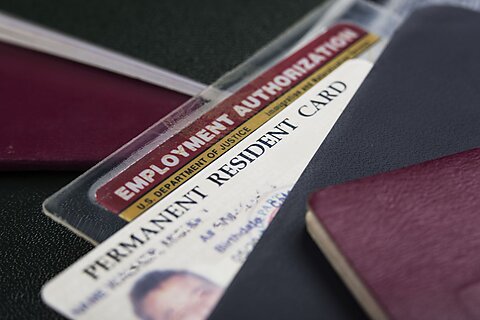To sponsor a foreign worker for a green card (i.e., permanent resident status in the United States), an employer must first receive an approved permanent labor certification from the Department of Labor (DOL). This certification states that the green card will not adversely affect US workers. The statute requiring the labor certification provides no details about what this process should look like and, into this void, the DOL has unleashed an avalanche of complicated requirements, forcing employers to recruit US workers before they can receive a certification.
But the DOL will waive many of these complicated requirements in the case of a shortage occupation. The DOL’s shortage occupation list is known as Schedule A. It was last updated in 1991, and it contains just two “shortage” occupations: physical therapists and registered nurses (as well as people with “exceptional ability,” but this classification is reportedly almost never used, though this might change thanks to a new US Citizenship and Immigration Services’ policy change announced this month). For the last 33 years, DOL has never recognized any other occupations as being in short supply. But now DOL is requesting that the public weigh in on whether to expand the list.
The permanent labor certification should not exist. Green card holders do not harm US workers because foreign workers consume goods and services, which increases demand for US workers elsewhere in the economy. Green card holders can’t be paid below market wages because they can simply leave to go to a job offering the market wage. This bureaucratic protectionism ultimately hurts US workers to the extent that it keeps out skilled workers who will increase demand for their services in other jobs elsewhere in the economy.
The permanent labor certification as it exists is an unnecessary bureaucratic nightmare. In 2004, when the government announced it would be streamlining the labor certification, it stated that most applications would receive a decision between 45 and 60 days under what it calls “non‐audit review,” which is supposed to be a streamlined approval process.
Instead of 60 days, these applications are now taking an astounding 397 days—up from 96 days in the second quarter of 2019. Instead of meeting the 60‐day limit announced in the regulation, the wait time is growing by almost 60 days every six months.
Naturally, the result is that a huge backlog has developed, increasing from about 27,000 in 2019 to over 161,000 in the first quarter of FY 2024. This is now more than an entire year’s worth of filings and adjudications. It’s likely that at the current pace, none of the filings being submitted right now will be reviewed by the DOL for a year and a half or more.
The DOL is not increasing adjudications in response to this crisis (Figure 2). From calendar year 2019 to 2023, DOL has not adjudicated as many applications as in 2018. In total, just keeping up with the 2018 pace would have reduced a cumulative 61,000 backlogged cases. That pace would have been insufficient to keep up with demand, but it would be better than where the agency is now.
Given that it has proven incapable of increasing adjudications through the individualized procedure, DOL must update Schedule A to meet its legal obligations to issue certifications and follow its own regulations.
It’s also important to locate the permanent labor certification in the full context of the employer‐sponsored immigration process. The first step of the labor certification—which even Schedule A applicants must perform—is to receive a prevailing wage determination from the DOL. This is also unnecessary because DOL publishes the prevailing wages for each occupation on its website. Naturally, DOL is doing historically bad at processing these applications as well, with the average application taking over six months.
Then, the average employer takes another six months from the prevailing wage determination to recruit and prepare to file a labor certification application. Altogether, DOL’s procedures are taking an astounding 800 days for the average employer in 2024 (Figure 3). That’s not including lawyer consultations before the process begins. Schedule A cuts over 600 days from this process.
Although DOL’s processing times have escalated in recent years, the permanent labor certification has been a convoluted disaster since the current iteration began in 1977. Until 1965, the permanent labor certification only existed as a veto in cases where the government could show that workers would be harmed, such as during a strike. After 1965, the language shifted the burden to the immigrants to prove that they would not harm US workers. However, in 1967, the DOL clarified that it would not be using the new system similarly to the old system.
As Figure 4 shows, the type of labor certification is a key predictor of whether employer‐sponsored immigrants must obtain another temporary visa first before the employer tries to run through this process. This two‐step process has become a necessity for employers because the labor certification is time‐consuming and complicated. Employers cannot sit around for years waiting for the DOL to approve them, so the DOL has funneled all these permanent employees into the temporary system unnecessarily. This reduces visas available in the temporary system while limiting the rights of the workers who come.
Despite this monumental bureaucratic morass, DOL denies few permanent labor certifications. From October 2014 to December 2023, DOL denied a total of just 50,427 permanent labor certification applications compared to 892,380 approvals. DOL is reviewing 19 applications to get a single denial. This fails any reasonable cost‐benefit test. Employers are spending tens of thousands of dollars to go through this process. The permanent labor certification needs fundamental reforms to streamline it. At a minimum, DOL should conduct an in‐depth audit of a random percentage of employers and simply approve the rest, which is effectively the system that the 2004 regulation promised.
However, since DOL cannot figure out how to efficiently handle them, it should put more occupations in Schedule A. Table 1 lists 83 occupations accounting for two‐thirds of all labor certifications, which have denial rates of 2 percent or less (including only occupational codes with at least 20 applications). DOL is reviewing 57 applications for each denial in these occupations. This is unjustifiable. Moving these 83 occupations to schedule A would speed up the other one‐third of applications and give the agency more time to review the applications with higher denial rates. These occupations have demonstrated that there is a shortage, so there is no need to subject them to an individualized review.
This is not the only way that DOL should consider whether an occupation is a shortage occupation, but it is a useful place to start. This is something that DOL has directly measured over a long period and bears directly on whether it is worth DOL’s limited resources to review these particular applications. Of course, the employment situation in the United States is not static, but the unemployment rate has almost no relevance to these highly specialized jobs. In 2020, the unemployment rate increased without any change in the labor certification approval rate.
To avoid a perpetual Schedule A list, however, the DOL could reinstate individualized review to see if the situation has changed if the yearly average unemployment rate in the occupation has increased by more than two percentage points since it was last listed as Schedule A. The DOL could then reassess these occupations again after six months to see if 98 percent or more are still being approved.
DOL’s goal should always be to optimize its resources and avoid the lengthy delays that harm US companies that file labor certification applications. According to DOL data, these companies employ over 84 million people, and harming these companies only harms their existing employees who work alongside immigrant workers. It also hurts countless US consumers who use the products and services that these immigrants produce in the United States. DOL must immediately address its permanent labor certification processing and expand Schedule A.




